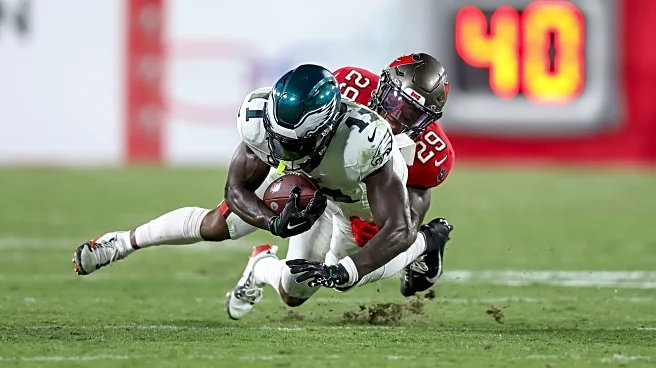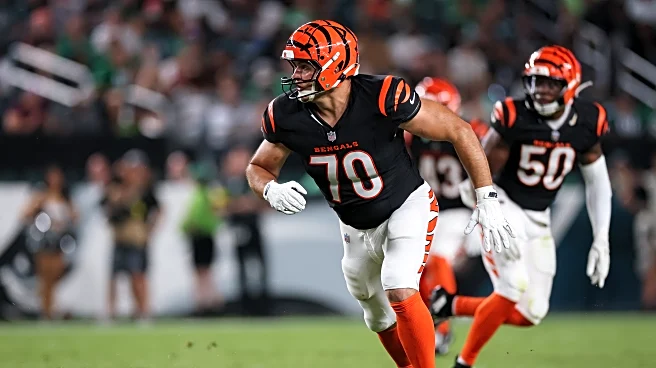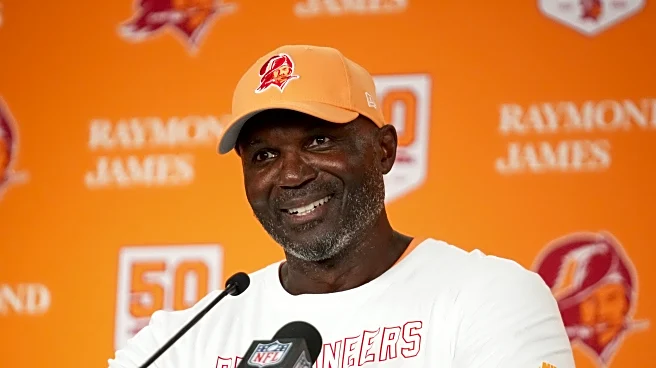What's Happening?
The Tampa Bay Buccaneers have signed defensive tackle Desmond Watson to their practice squad, according to an anonymous source. Watson, who played college football at Florida, was initially signed by the Buccaneers after going undrafted in April. Known for his size, Watson weighed 464 pounds at his pro day, making him the heaviest player in NFL history. Despite losing 25 to 30 pounds before the draft, Watson was unable to practice with the team due to weight concerns and spent training camp on the non-football injury list. The Buccaneers have not disclosed an ideal playing weight for Watson, but he has been working with a team nutritionist. Coach Todd Bowles noted Watson's recent good workout but emphasized that his signing is not solely to counter specific plays like the Eagles' 'tush push'.
Why It's Important?
Desmond Watson's signing is significant as it highlights the challenges and considerations NFL teams face when dealing with players of exceptional size. Watson's potential impact on the Buccaneers' defensive line could be substantial, especially in short-yardage situations. However, his ability to contribute effectively will depend on his physical condition and readiness to play. The Buccaneers' decision to sign Watson reflects their interest in developing his skills and integrating him into their defensive strategy. This move also underscores the importance of player health and fitness in professional sports, as teams must balance talent acquisition with long-term player welfare.
What's Next?
The Buccaneers are set to face the Philadelphia Eagles in an upcoming game, but Watson is unlikely to play immediately. The team will continue to assess his progress and determine his readiness for active participation. Coach Bowles has indicated that Watson's future role will depend on his development and the team's needs. The Buccaneers will monitor his weight and fitness levels closely, potentially adjusting their defensive strategies based on his availability. Watson's journey with the Buccaneers could serve as a case study in managing player health and performance in the NFL.












